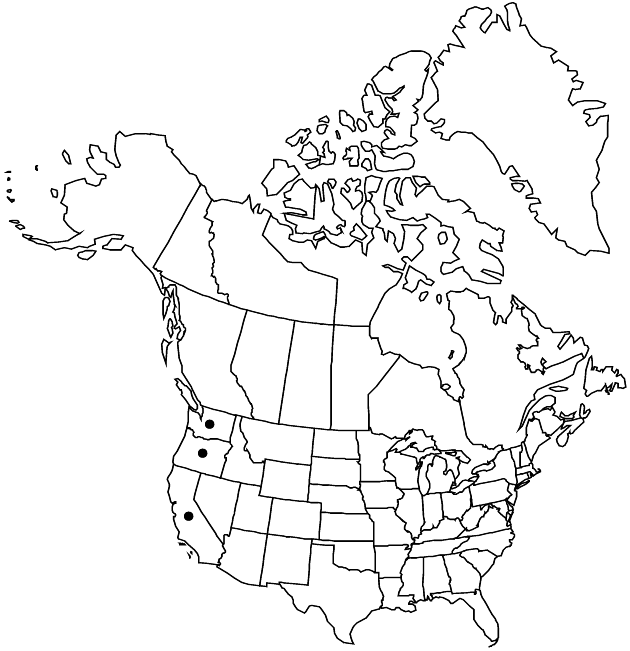Agoseris apargioides
Pittonia 2: 177. 1891.
Stems 0 or 1–5+ (becoming buried by drifting sand and appearing pseudorhizomatous). Leaves usually reclining to decumbent, sometimes erect; blades mostly oblanceolate to spatulate, sometimes nearly linear, 3–15 cm, margins usually dentate to lobed or pinnatifid, rarely entire, lobes 3–5(–7) pairs, filiform to spatulate, spreading to antrorse, lobules mostly 0, faces glabrous or densely hairy. Peduncles ± elongating after flowering, 7–45 cm in fruit, glabrous or glabrate to hairy, often villous basally, sometimes villous to tomentose apically, sometimes stipitate-glandular. Involucres obconic to hemispheric, 1.5–2.5 cm in fruit. Phyllaries imbricate (sometimes subequal) in 2–3 series, green or medially rosy purple, often spotted and/or with purple-black midstripes, margins ciliate to tomentose, faces usually ± villous, sometimes glabrous, sometimes stipitate-glandular; outer mostly spreading, adaxially usually ± tomentose, rarely glabrous; inner erect, elongating after flowering. Receptacles epaleate. Florets 25–200; corollas yellow, tubes 2–5.5 mm, ligules 3–16 × 1–3 mm; anthers 1.5–4.5 mm. Cypselae 5–12 mm; bodies fusiform to obconic, 3–5 mm, beaks (1–)3–8 mm, lengths mostly 1–2 times bodies; pappus bristles in 2–3 series, 4–9 mm. 2n = 36.
Distribution

Calif., Oreg., Wash.
Discussion
Varieties 3 (3 in the flora).
A misinterpretation of the type description of Agoseris apargioides resulted in its confusion with A. hirsuta during the latter half of the twentieth century; the two species are not conspecific. Agoseris apargioides (in the strict sense) here includes what most authors of recent floras have called A. apargioides subsp. maritima and/or var. eastwoodiae. It occurs on coastal dunes along the Pacific coast from central California to Washington. A unique feature of A. apargioides is that its stems become progressively buried by drifting sand, leaving a terminal rosette of leaves exposed, the plants thus appearing pseudorhizomatous.
Agoseris apargioides is part of a close alliance that includes A. heterophylla, A. hirsuta, and A. coronopifolia from South America. Exact relationships within this group are not clear. Putative hybrids between A. apargioides and A. heterophylla var. cryptopleura, A. hirsuta, and A. grandiflora var. grandiflora have been identified.
Selected References
None.
Lower Taxa
Key
| 1 | Ligules 3–6 mm; anthers 1.5–2.5 mm; phyllaries glabrous or villous, eglandular | Agoseris apargioides var. maritima |
| 1 | Ligules 8–16 mm; anthers 3.5–4.5 mm; phyllaries glabrous or tomentose, ± stipitate-glandular | > 2 |
| 2 | Plants often densely villous; leaf blades mostly oblanceolate to spatulate, margins dentate to lobed, lobes oblanceolate to spatulate; phyl- laries densely villous to tomentose | Agoseris apargioides var. eastwoodiae |
| 2 | Plants mostly glabrous or sparsely villous; leaf blades usually oblanceolate, sometimes linear, rarely spatulate, margins entire or laciniately pinnatifid, lobes filiform to lanceolate; phyl- laries glabrous or villous | Agoseris apargioides var. apargioides |